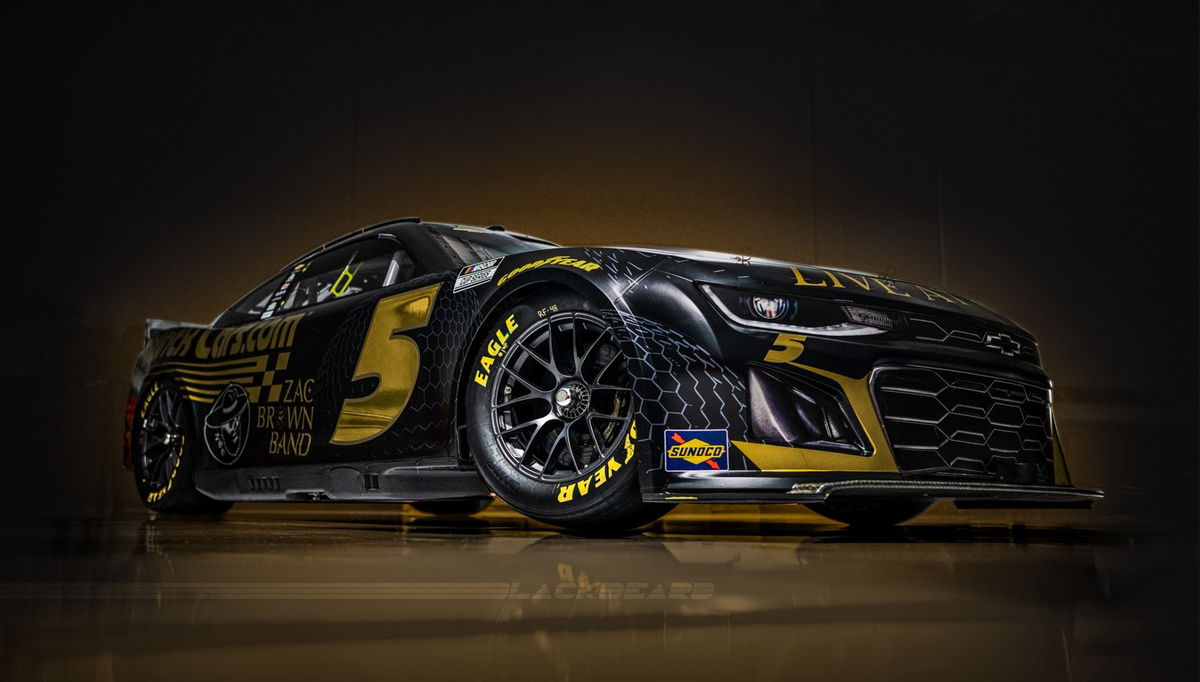
Imago
via X

Imago
via X
If you drove a classic Chevy, chances are it was secretly bred on a NASCAR oval. General Motors has a storied and highly successful history of leveraging NASCAR competition to shape its production lineup, a tradition rooted in the sport’s earlier eras where cars were truly ‘stock.’ For Chevrolet, this birthed icons like the 1963 Impala Z11, a lightweight model built to chase wins, and Monte Carlo, which dominated the mid-1970s and 1980s for GM teams. But an upcoming revelation might awaken many core NASCAR fans.
Watch What’s Trending Now!
Just when Chevrolet laps around as the only NASCAR manufacturer currently racing a discontinued model, a word’s come out of GM’s lab. The automaker appears to be entering a new phase of its product evolution, one that embraces both innovation and nostalgia: a mix of electric hybrid and internal combustion vehicles. While many automakers are moving away from traditional body styles, the company now seems poised to rekindle its focus on passenger cars in the U.S. market, suggesting that sedans and coupes may still play a crucial role in its future lineup.
According to sources familiar with GM’s internal planning, the automaker is developing “multiple variants” of all new passenger cars built on the Alpha 2-2 platform, an updated version of the rear-wheel-drive Alpha 2 architecture that underpins models like the 6th-generation Chevrolet Camaro and Cadillac CT4 and CT5.
ADVERTISEMENT
As previously reported by GM Authority, the Alpha 2-2 will form the foundation for the next-generation Cadillac CT5, but insiders say GM has at least one more vehicle planned for the U.S. based on the same platform.

Imago
via X
Though the identity of this second model remains a mystery, speculation points to several intriguing possibilities: a brand-new Chevy sedan, a next-generation Camaro coup or convertible, or even a CT5-based luxury coupe inspired by Cadillac’s Expressive Coupe concept.
ADVERTISEMENT
The Alpha 2-2 architecture gives GM the flexibility to merge performance with practicality, potentially reviving storied nameplates like the Malibu or Impala, or even introducing a 4-door Camaro to rival Ford’s rumored 5-door Mustang. With production likely centered at the Lansing Grand Rover Assembly plant, the move could signal not just a strategic pivot but also a revival of GM’s iconic car lineage.
The news has naturally ignited a frenzy of speculation among the racing and automotive fans.
ADVERTISEMENT
Just last month Bob Pockrass of Fox Sports hinted that a new body style for the Chevy Camaro ZL1 2026 can be expected to drop in the next couple of weeks. But considering they ceased road production in 2024, the future in Cup and Xfinity has remained murky. Now with the GM working on new variants, it has only sparked hope about some testing in the NASCAR ovals.
Fans hold the wildest hopes for Chevy’s new sedan
One fan fervently hoped, “Please, be a Caprice Wagon,” which connects directly to NASCAR’s long history of racing unconventional and full-sized family sedans and wagons, particularly in the 1970s and the 1980s. The Caprice Classic, along with the rival Ford LTD and Plymouth Gran Fury, was one of the last true full-size, rear-wheel-drive passenger cars with a massive footprint that often saw action on the tracks. It provided a distinct aesthetic different from the sleeker mid-size models that followed.
ADVERTISEMENT
More recently, the desire for an RWD wagon was briefly satisfied by the Australian-built Holden Commodore platform. It was the basis for the short-lived Chevrolet SS sedan raced in NASCAR. Another fan stated, “Would be cool to see the Monte Carlo resurrected.” From 1983 to 1987, the streamlined Monet Carlo SS and its highly aerodynamic variant, the SS Aero Coupe, formed the backbone of Chevy’s racing program, propelling legends like Dale Earnhardt to back-to-back Winston Cup Championships in 1986 and 1987.
Even after its temporary discontinuation in 1988, the name revived specifically for the sport in 1995, and its final generation in the 2000s included special edition models like the Intimidator Edition and the Tony Stewart Edition. While one said with conviction, “A Buick Grand National!!” The original Regal Grand National debuted in 1982 to celebrate Buick winning the NASCAR Manufacturers’ Championship in 1981 and 1982 with cars like the Regal driven by Darrell Waltrip.
This racing heritage culminated in the notorious 1987 GNX, a blacked-out coupe with a turbocharged V6 that was rated at 276 horsepower but widely rumored to produce over 300 hp, famously making it quicker to 60 mph than the contemporary Corvette and even some Ferraris. Some fans commented, ““The Camaro name isn’t dead” “It will be a ZL1” Camaro Renders are showing up. They are probably just using it to reintroduce the Camaro.”
ADVERTISEMENT
Although the road-going 6th-generation Camaro officially ceased production in 2024 due to declining sales, GM has signaled that it is not the end of Camaro’s story, a promise that keeps the door open for a return, possibly as an electric vehicle or a drastically redesigned performance car.
Another fan opined, “I was surprised they did away with all of their cars, I get downsizing from all the different makes down to 1 and I thought they had chosen Malibu once they got rid of Impala but then they dropped Malibu as well. Perhaps they will make a sort of hybrid of them and reintroduce a sedan model. Make it slightly bigger than the Malibu and slightly smaller than the Impala.”
The resulting void left in the sedan market is precisely why fans hope the new car linked to the 2026 NASCAR body will be a hybridized model that blends the best features of both, occupying a size slot between the former Malibu and Impala to deliver a competitive non-SUV option.
ADVERTISEMENT
ADVERTISEMENT
ADVERTISEMENT
ADVERTISEMENT

